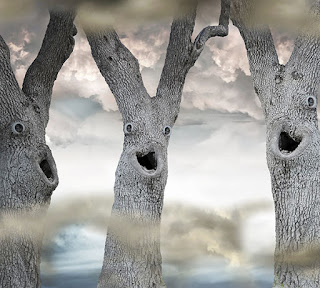
Personification
This is where things (and animals) are given human qualities or emotions. It is a technique used to create mood in a story. Types are listed in order of usefulness!
Add your own examples in the comment box below!
[1] Non-human things perform human actions. Please note, the definition gets blurry for animals – do they ‘grieve’, ‘scream’ or ‘love’, like humans do – if so, can it really be called personification?
sunlight danced on the water; wind whistled through the trees; night crept over the earth; creatures screamed in the night; the house gaped, slack-mouthed; the blank gaze of a hundred windows; her dress caught the light and threw it back
[2]Non-human things seem to have human emotions (may also be Pathetic Fallacy if it’s weather)
e.g. the storm raged furiously; the soft inviting sands; the trees clustered fearfully together; the gate groaned; the forest slept; the rose blushed; the ground ran away from us
[3] Personification of an Abstract Noun (treating the idea, or concept as if it were a person – making an abstract force or power more real
e.g. for Love: Aphrodite, Cupid and Queen Mab are ‘gods’ of, or represent, love
For Death and Time: the Grim Reaper and the ‘dance of death’ are medieval symbols of death as a person. The Roman god, Saturn, and the Greek god, Kronos, control death and time.
e.g. Time waits for no man; Love’s not Time’s fool; Beauty is in the eye of the beholder; a slave to Love; a worshipper of Beauty; in the temple of Beauty; Fortune favours the bold; Lady Luck favours you; Luck is against us; like the careful undressing of Love
[4] Human accessories or body parts given to non-living things:
e.g. river bed, river mouth, the foot or head of a table or bed, the foot of the mountain, the head of the company, chair or table legs, armchair, the lip of the jug, the eye of the storm, the body of the group, the head of the group, the body [main part] of the text, he went out on a limb, the next leg of our journey
WATCH the fun Prezi I made about Personification here.

